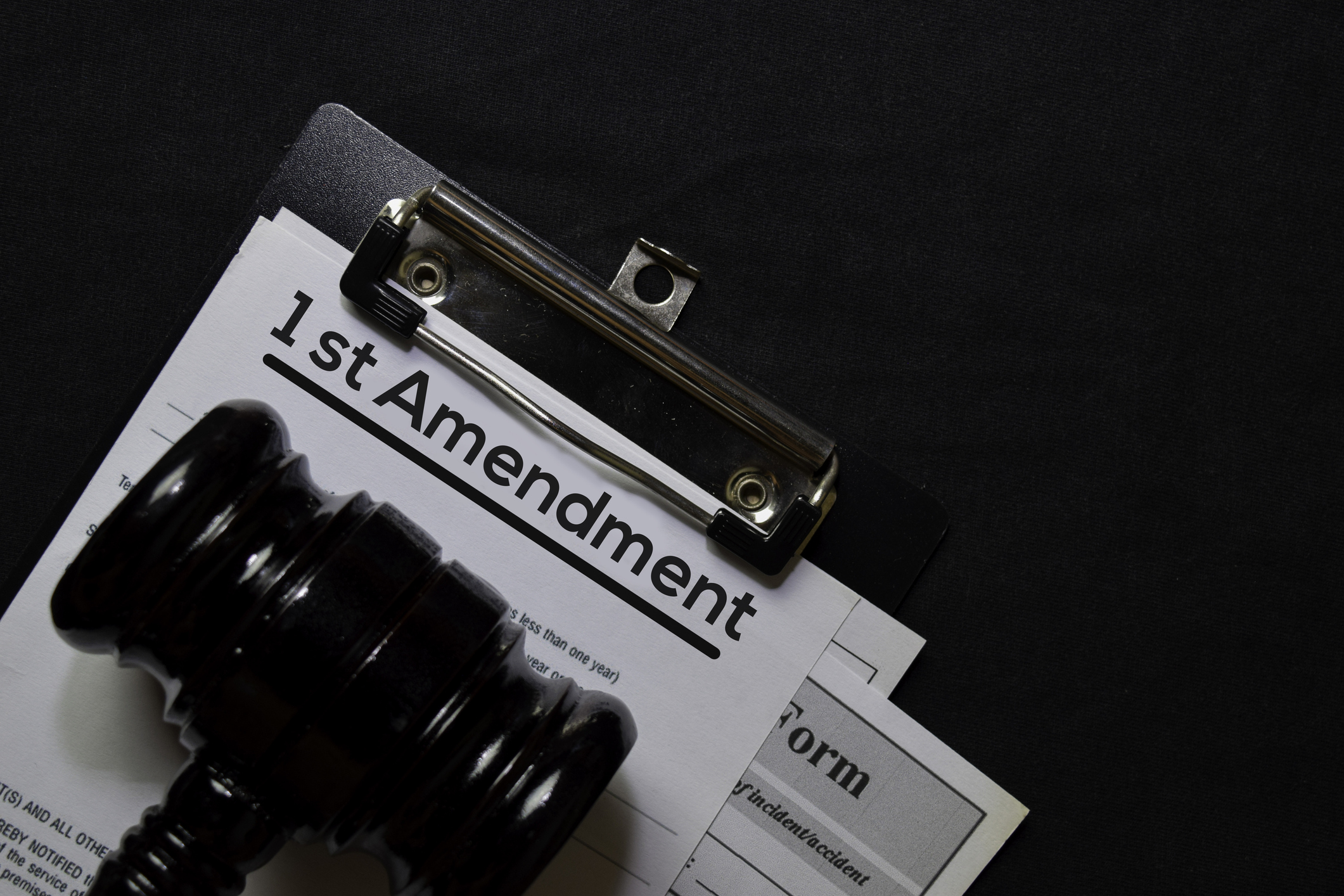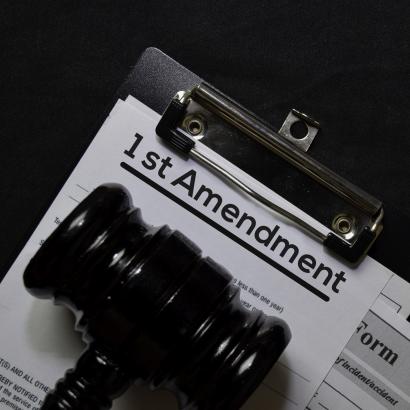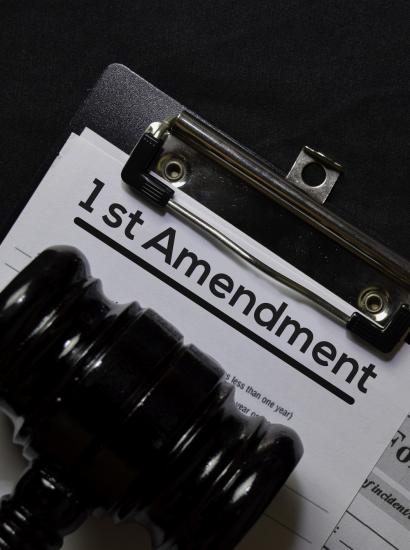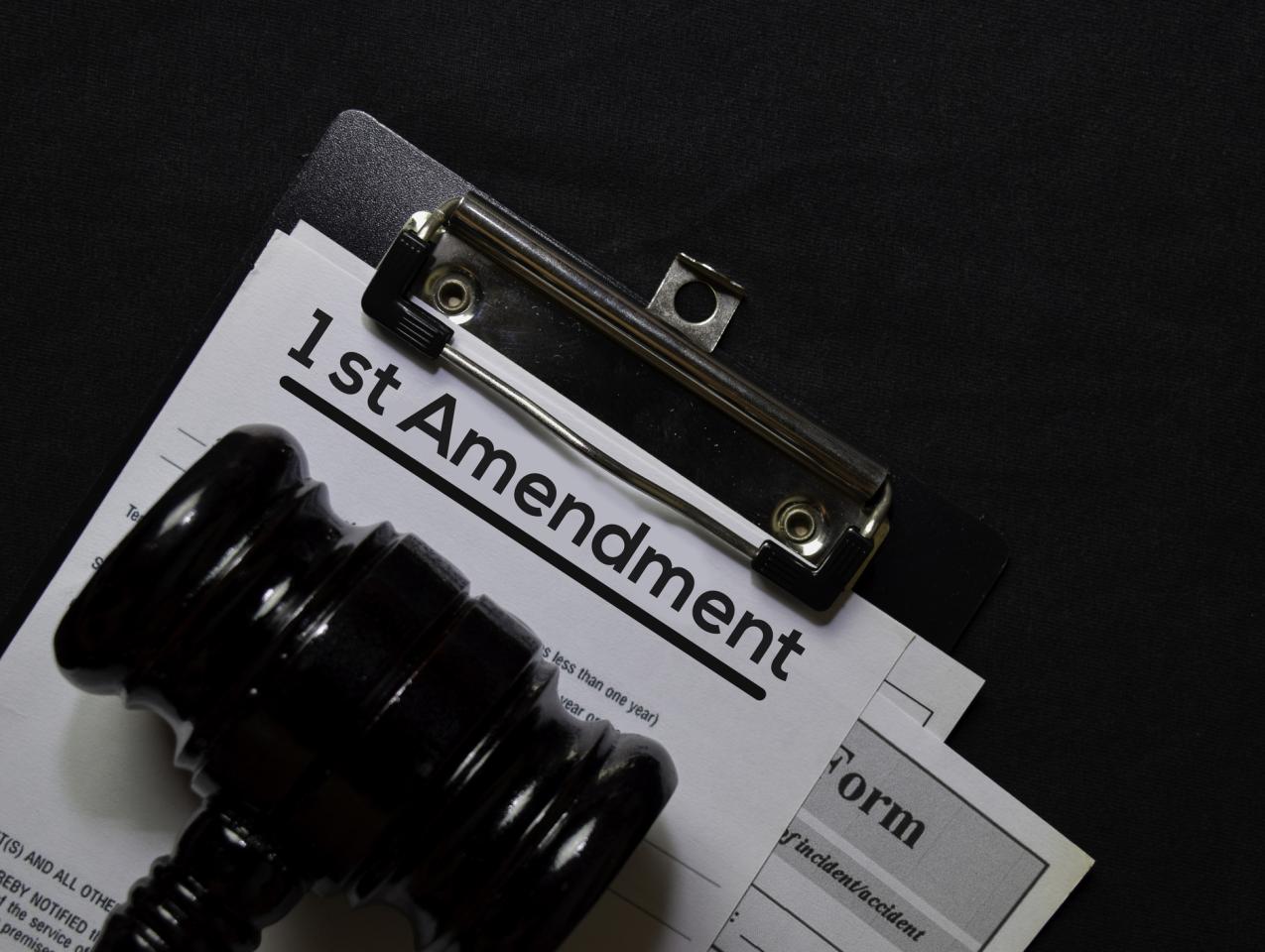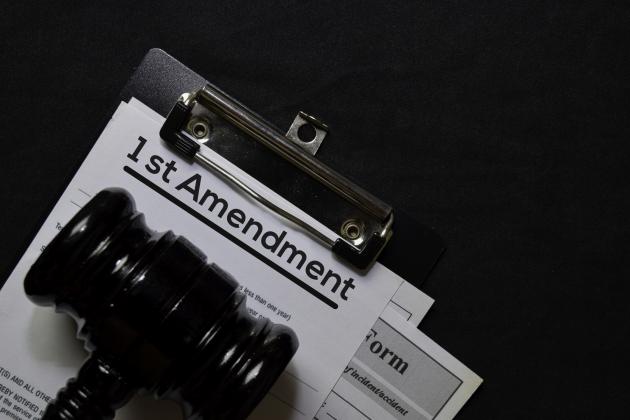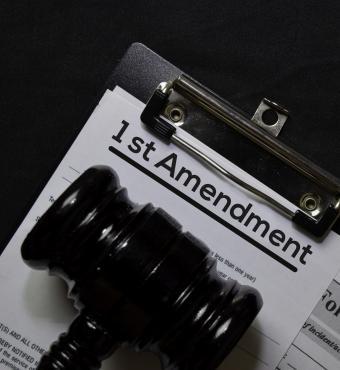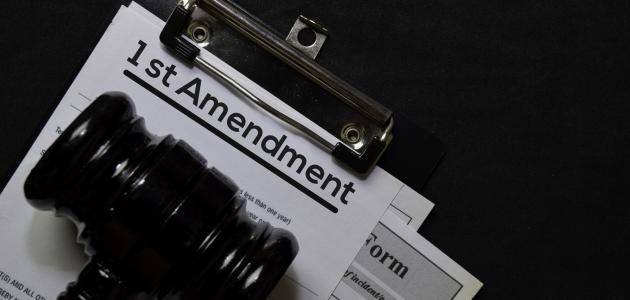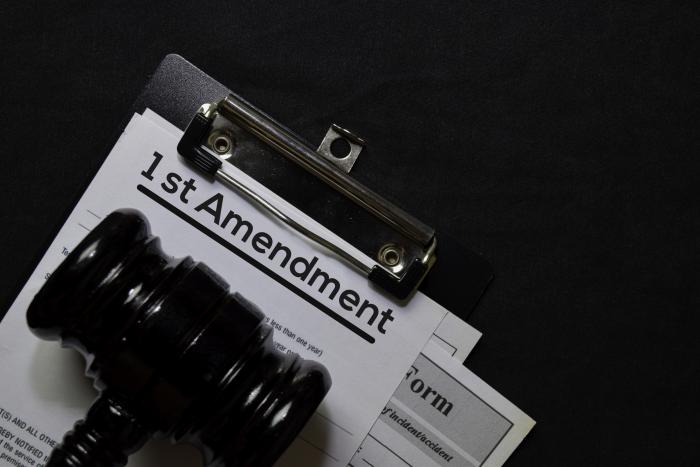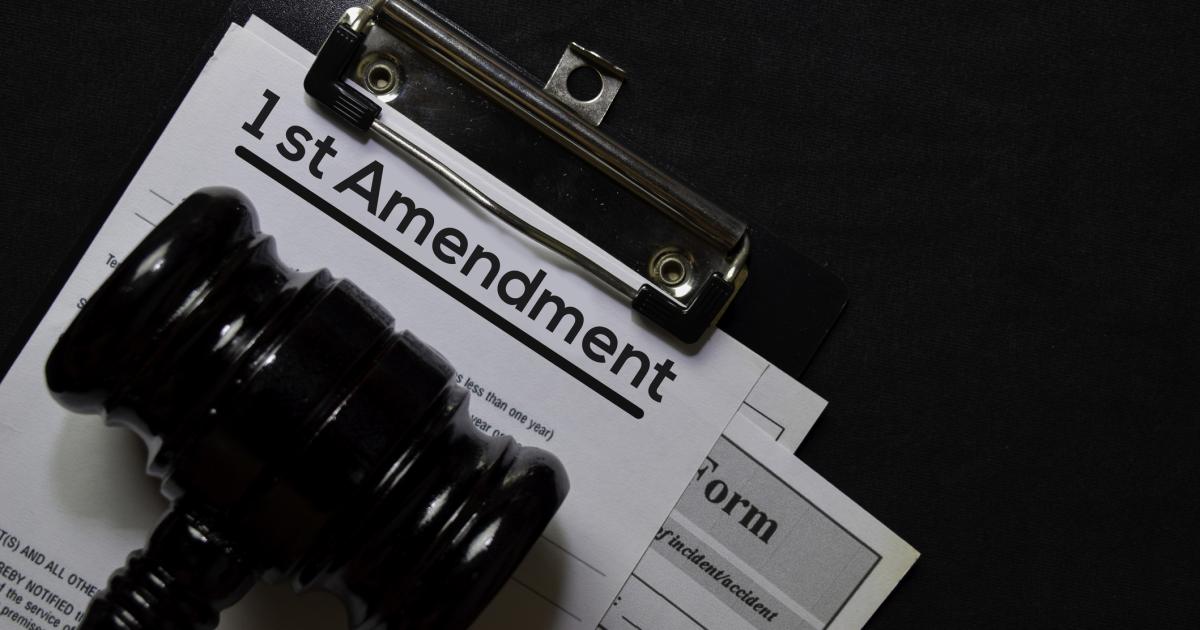- Politics, Institutions, and Public Opinion
- Revitalizing American Institutions
Universities across the country are engulfed in prolonged campus demonstrations by organized Hamas and Palestinian protesters who rail against the Israeli military response in Gaza to the Hamas attack of October 7. Their message breaks into two broad categories. The first accuses Israel of genocide and lesser offenses in conducting its operations in an intense urban environment where soldiers and civilians are in constant close contact with each other. The second attacks the legitimacy of the Jewish state, insisting that “Palestine must be free from the river to the sea.”
The protesters insist that their occupation of campus facilities is protected constitutionally as part of the freedom of speech and assembly guaranteed under the First Amendment to the Constitution. These controversies are surely headed to the courts, as some students (and their sympathizers) have been arrested and may well be charged with criminal trespass, while other student groups continue to press demands for the divestment of shares of Israeli institutions and American firms that do business with Israel, while condemning in open letters universities for what they regard as an inexcusable infringement of their rights. On this matter, the students are in the main wrong on the legal issues, and the universities were mainly right in setting hardline deadlines (from which many have since retreated) to dismantle protest encampments.
Hence this review of constitutional doctrine.
The text of the First Amendment states that “Congress shall make no law . . . abridging the freedom of the speech, or of the press, or the right of the people peaceably to assemble, and to petition the Government for a redress of grievances.” The first word “Congress” shows at a minimum that this provision is intended to guard against government intervention, where the evident danger is that it will use its monopoly over the power of force to stifle criticism that could lead to political action against it, which could further lead to its removal in future elections or to spirited and informed opposition to particular policies in times of both peace and war. When the Fourteenth Amendment was held to extend, via the doctrine of incorporation, the First Amendment to the states, the purpose remained the same even if the targeted government had changed.
Even after this expansion, however, private actions by owners of private property were not subject to constitutional oversight on these grounds, and for good reason. Private individuals may be thought of as a form of individual sovereignty over a limited domain, but there is this crucial difference between individual ownership and state sovereign power: each owner of private property may have the power to exclude others, but not from anyone else’s property. There is thus competition between owners of separate properties that is in sharp contrast with the monopoly power of the state, applicable to all private parties. At this point, it would be dangerous to convert this decentralized system of property rights into a state monolith by allowing the state to determine who may enter or use any private space, including campus buildings and open spaces. Its function in this setting is to offer public enforcement of a private right in order to minimize the risk of private violence from underenforcement of the law. Thus, if the owner of that property insists on the right to exclude any non-owner (students, faculty, and friends included), then the state should use its powers to enforce that end, while undertaking serious measures to avoid the escalation of violence, which was, as is too easily forgotten, the reason for reading the Riot Act of 1715, or its modern equivalents, in order to defuse the tension around “riotous assemblies.”
The logic of the First Amendment needs further clarification. It is all too easy to insist that it allows all people to speak whatever and wherever they want, as if all speech were somehow free. But the word “freedom” as used in the First Amendment has to be carefully integrated with the rest of legal and constitutional doctrine. We often say that people are entitled to freedom of action. But that does not mean that they are allowed to use force and fraud against other individuals, so murder, theft, rape, and trespass are out from under the umbrella of protected activities, as are the threat of force, fraud, deceit, defamation, and intentional infliction of emotional distress. And so it is that the protection of speech is only intelligible against a backdrop that also respects the limitations that are imposed on both speech and action.
The same type of argument applies with equal force in dealing with the phrase “peaceably to assemble,” which rules out cases of violence in either public or private places. There are no doubts about the right to peaceably assemble on your own property. It is a ticklish matter as to when there is a right to assemble on public property, where it is commonly understood that all such activities are subject to reasonable “time, place, and manner” restrictions. First on that list are those demonstrations that block roads, airports, train stations, and bridges, which never are allowed, even as they have been undertaken by Palestine and Hamas supporters in Chicago, New York, San Francisco, and dozens more cities. None of these political acts is legally justified by the supposed justice of the underlying cause, which if anything aggravates the criminal charges. And matters only get worse when these demonstrations take place on private property, where any owner (universities included) has a right to prevent any protests on the land, whether peaceful or not.
And be under no illusions that the gatherings were assemblies, let alone peaceful ones. The standard definitions of an assembly include meetings that are done for particular purposes, which should certainly include protests of specific government or private actions. But an occupation of property by setting up camps and tents for overnight use is no assembly but an outright seizure of property, whether public or private. And it is not peaceful if it uses vicious epithets and hostile actions against outsiders, which has certainly happened multiple times at Columbia, New York University, Yale, and other places, and likely to recur. At Columbia, the impasse persisted as of Tuesday, and the university has blinked in using force to defend itself against the intrusion, which is simply further evidence of the utter breakdown of both social norms and legal protections that will only encourage the spread of disorder.
Even worse: there is a very strong case that the positions the protesters take are themselves deliberate acts of defamation, or false statements intended to lower the targets of the abuse—Israel, Zionists, and Jews—in the esteem of the world, which has real consequences if the defamation disrupts military operations in Gaza, or Israeli commercial and military relationships with nations around the world. And that is what has taken place. The constant naked refrain that Israel is responsible for the deaths of more than 34,000 people, mostly women and children, is based on fake numbers promulgated by Hamas and resting on fabricated data, marked by the repeated unwillingness to break out military causalities from civilian ones, as well as to treat all civilian casualties as though they were attributable to Israeli actions without breaking out deaths caused by Hamas’s use of its own people as human shields, killing them with errant missiles or gunfire, or blocking or diverting humanitarian aid from civilians.
Nor has sufficient attention been paid to the analysis by John Spencer that offers exhaustive evidence that the Israelis have “created a new standard for urban warfare” with an unprecedented concern for civilian non-combatants. This analysis has been subjected to some criticism of how Israel carries out complex maneuvers, but the criticism does not suggest even a whiff of “genocide”—let alone anything remotely close to the truly genocidal horrors of Hamas’s attacks of October 7, violence that in too many places was ignored, excused, or lauded, but never condemned by the Palestinian supporters on American campuses.
Group defamation is generally not actionable in a court of law, but it need not be left unopposed. Counterspeech is one possible remedy. The set of responses available to universities also includes internal disciplinary proceedings, and further sanctions can be imposed by immigration-licensing authorities, prospective employers, and other membership associations and honorary societies. In many instances, the offensive conduct should be treated as real evidence of moral turpitude that justifies heavy sanctions.
In making these evaluations, it is critical to be alert to those areas of free speech in op-eds and letters that urge Israel to back off its explicit wartime objective of uprooting Hamas, views that should absolutely be protected even if vigorously contested in the marketplace of ideas. But any such informed, even passionate, debate is faced with insuperable obstacles if Gresham’s law of political discourse still holds, whereby the bad currency of social exchange drives out the good. The survival of American higher education depends on maintaining a proper balance of expression and responsibility, which to date has proved far too elusive.







